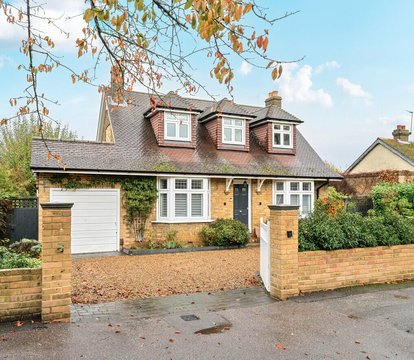Trusted Estate Agents in Kent Helping You Sell with Confidence
As a leading estate agent in Kent with over 35 years of experience, Quealy & Co understand that selling your home in Kent can feel daunting. The conveyancing process, the legal transfer of ownership, is one of the most important steps in any property sale.
Having a proactive, reliable conveyancer on your side helps everything run smoothly and reduces stress. Our team has created this clear, step-by-step guide so you’ll know exactly what to expect when selling your home in Kent.
If you’re planning to move in 2025, get in touch for a free, no-obligation property valuation and friendly expert advice.

Step 1: Find a Good Conveyancer in Kent
Although the process formally begins once you’ve accepted an offer, it’s wise to find a conveyancer early. Having someone in place means your property sale in Kent can start without delay.
Compare a few quotes, ask about local experience, and check reviews or recommendations. Our Quealy & Co team can connect you with trusted conveyancers in Kent we know and work alongside regularly.
Tip: Avoid choosing based on price alone. A skilled conveyancer can prevent costly mistakes and delays later in your sale.
Step 2: Sign the Letter of Engagement and Verify Your Identity
Once you’ve selected your conveyancer, you’ll sign a letter of engagement confirming their instruction and fees.
You’ll also need to provide proof of identity (such as a passport or driving licence) and proof of address (like a recent utility bill or mortgage statement).
Step 3: Complete the Property Questionnaires
Your conveyancer will send you several forms to complete, including:
Property Information Form – details about your home, improvements, and warranties.
Fittings & Contents Form – outlining what you plan to include in the sale.
Be honest and accurate. Supplying the right documents (like boiler service records or window warranties) avoids later hold-ups.
If you’re unsure how to complete a section, your conveyancer can help.
Step 4: Speak to Your Mortgage Provider
If you have a mortgage, contact your lender to let them know you’re selling. They’ll explain how to pay off your balance upon completion or how to port your mortgage to your next property.
For tailored financial advice, speak to Quealy & Co Financial Services.
01795 505761 | mortgages@quealy.co.uk
Step 5: Draft Contracts and Negotiate
Your conveyancer will now prepare a draft contract for the buyer’s solicitor, including:
The sale price,
Fixtures and fittings,
Supporting property documents,
Proposed completion date.
This stage often involves negotiations. The buyer may request surveys or inspections, and occasionally seek price adjustments. Your conveyancer will guide you through every discussion to protect your interests.
Step 6: Exchange of Contracts
Once all terms are agreed, contracts are exchanged, and both you and the buyer are legally committed to the sale. Backing out after this point can result in legal and financial penalties.
Step 7: Between Exchange and Completion
This is the short waiting period between exchange and completion, typically two to four weeks. It’s the perfect time to finalise removals, utilities, and moving-day plans.
Step 8: Completion Day
Completion day marks the exciting end of your property sale. Once your conveyancer confirms the buyer’s funds have cleared, you’ll hand over the keys and officially sell your home.
You’ll receive the remaining balance from the sale after your mortgage and legal fees are deducted. Congratulations! You’ve completed your property sale in Kent!

Need Advice on Conveyancing or Selling Your Home in Kent?
Whether you’re preparing to move or just starting to explore your options, Quealy & Co are here to help.
Our friendly local experts can recommend trusted conveyancers in Kent, answer your questions, and support you from valuation through to completion.
01795 429836
Book your free property valuation in Kent today and take the first step towards your next move.
Other Stories
15 December 2025
Property Of The Month: Park Avenue, Sittingbourne
14 December 2025
Saltwood Manor: A Landmark New-Build Home on the Kent Coast
11 December 2025
Your December 2025 Property Market Update
05 December 2025

 by
by 





